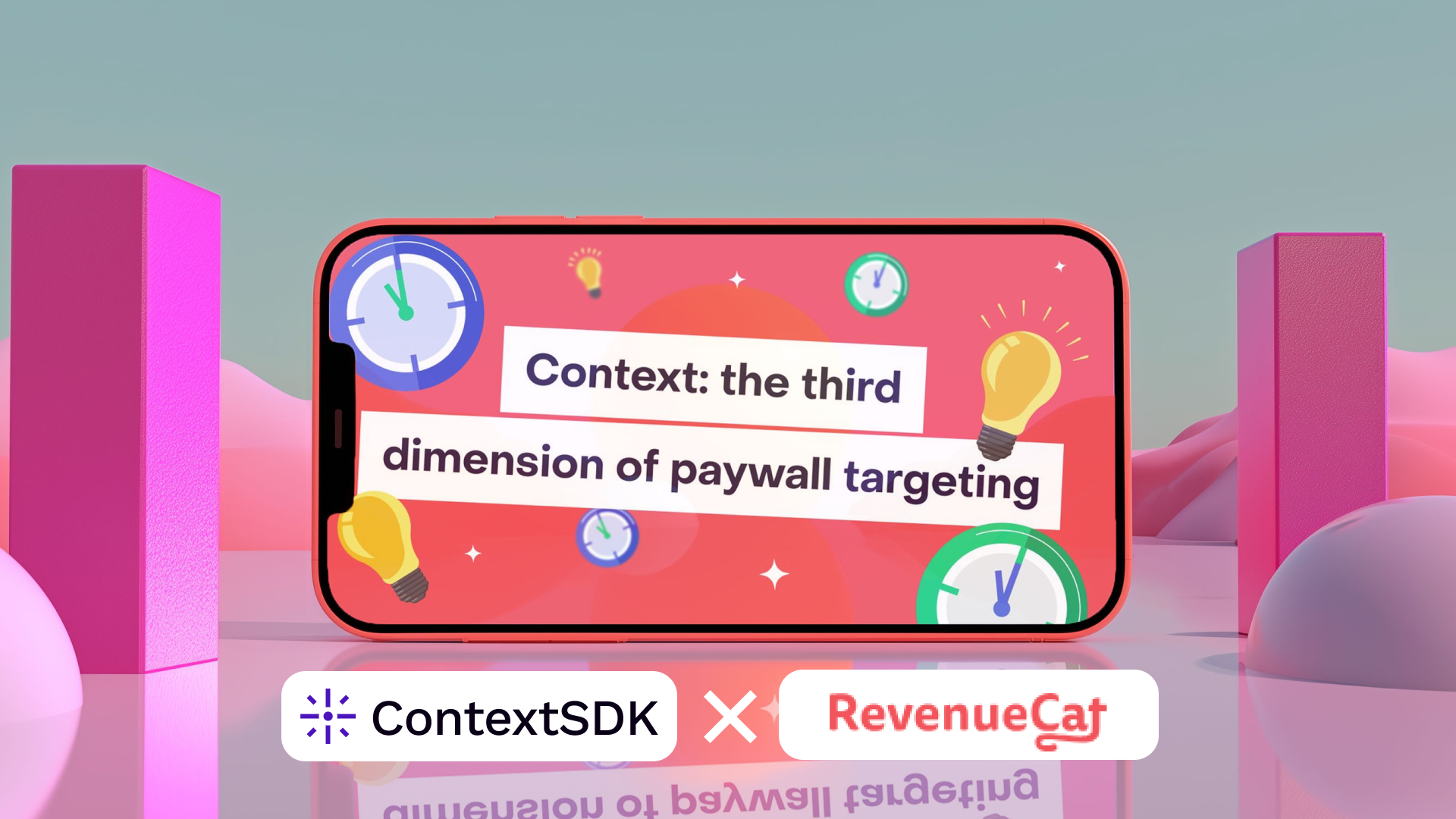How to Build a Winning Hybrid Monetization Strategy


Introduction
Hybrid monetization—combining in-app ads (IAA) and in-app purchases (IAP)—is revolutionizing how app developers drive revenue and sustain user engagement. As AppLovin’s insights suggest, this strategy is becoming the cornerstone of successful monetization, with 43% of games adopting a hybrid model in 2024. But how do apps strike the perfect balance between monetizing effectively and maintaining a stellar user experience?
This is where ContextSDK comes into play. As a leading on-device AI startup, ContextSDK empowers apps to optimize monetization strategies by leveraging real-world user context to deliver the right experience at the right time. Here’s how our tools, ContextDecision and ContextPush, can supercharge hybrid monetization.


Why Hybrid Monetization Matters
Hybrid monetization blends multiple revenue streams to cater to diverse user segments:
- Paying Users: IAPs target users who are willing to spend on premium features, subscriptions, or consumables like extra lives.
- Non-Paying Users: In-app ads (like rewarded videos or interstitials) monetize users who engage frequently but are less likely to make direct purchases.
This dual approach ensures apps maximize revenue potential across all user types. However, success hinges on careful timing, contextually relevant placements, and non-intrusive execution.
Understanding User Behavior: The Foundation of Hybrid Monetization
The key to a successful hybrid monetization strategy is understanding your audience. Segmenting users based on behavior—such as time spent in-app, spending habits, or engagement with ads—allows developers to personalize the monetization experience. For example:
- High-Engagement Users: These users might tolerate more frequent ads, making interstitial placements more viable.
- Frequent Spenders: Offering exclusive IAP bundles or discounts can encourage higher spend levels.
- Casual Users: Rewarded video ads can serve as an effective entry point for monetization without creating friction.
With ContextSDK, you can take this personalization to the next level by integrating real-world signals into your strategy.
How ContextSDK Revolutionizes Hybrid Monetization
ContextSDK, a leading Edge AI startup, empowers apps to optimize when and where ads or upsell opportunities appear by analyzing over 200 real-world signals, such as:
- Time of Day
- User Activity (e.g., idle, moving, or stationary)
- Device Behavior (e.g., low battery, recent screen activity)
Here’s how ContextDecision and ContextPush enhance hybrid monetization:
1. Target High-Receptivity Moments
Using ContextDecision, apps can determine the perfect moment to present an in-app offer or upsell. For example:
- Suggesting an IAP after a user completes a significant milestone, like finishing a level.
- Triggering rewarded ads during natural breaks, such as idle moments or between loading screens.
2. Personalize Ad Formats for Better Engagement
Different ad formats work better in different contexts. With ContextSDK, you can adjust ad formats dynamically:
- Rewarded Video Ads: Deliver these during moments of high engagement to incentivize users without disrupting their flow.
- Interstitial Ads: Use natural transitions like level completions or pauses to reduce perceived intrusiveness.
3. Optimize Frequency to Avoid Ad Fatigue
Nobody likes being bombarded with ads. ContextSDK helps you respect user tolerance levels by capping ad frequency dynamically, ensuring that users only see ads when it makes sense.
4. Recover Lost Opportunities
ContextSDK can identify missed monetization opportunities. If one placement goes unused due to poor timing, a second well-timed placement can re-engage users without overwhelming them.
Real-World Examples of Context-Aware Hybrid Monetization
1. Gaming Apps
- Rewarded Ads: Trigger rewarded videos offering power-ups after detecting idle moments.
- IAP Bundles: Offer special deals after users engage with a LiveOps event or achieve milestones.
2. Fitness Apps
- Subscriptions: Suggest premium plans during cooldown periods, when users feel motivated.
- Rewarded Ads: Provide free access to locked features in exchange for viewing an ad during quiet moments.
3. Streaming Apps
- Ad Placements: Insert interstitials during natural pauses, like episode transitions.
- Premium Upsells: Recommend subscriptions after a binge session or when users browse premium content.
Testing Your Monetization Strategy
A/B testing is crucial for refining your hybrid monetization approach. ContextSDK simplifies testing by providing insights into how users interact with different monetization strategies:
- Ad Placement Testing: Experiment with where and when ads appear.
- Engagement Metrics: Track metrics like click-through rates, engagement, and ARPDAU (average revenue per daily active user).
- Churn Monitoring: Identify when users drop off due to overexposure or poorly timed monetization efforts.
The Future of Hybrid Monetization with ContextSDK
Hybrid monetization is here to stay. As AppLovin notes, it’s one of the key drivers of growth for mobile apps, helping maximize revenue while keeping diverse user bases engaged. With ContextSDK, you can take this strategy even further by incorporating real-world context into your monetization efforts.
Key Benefits of Context-Aware Hybrid Monetization:
- Enhanced User Experience: Deliver relevant, timely interactions that feel natural and valuable.
- Maximized Revenue: Balance IAA and IAP strategies to cater to all user types.
- Improved Retention: Respect user preferences to build trust and loyalty.
Conclusion
Hybrid monetization offers the best of both worlds—engaging users who are willing to spend while still monetizing non-payers. However, success depends on timing, relevance, and user-centric design. By leveraging ContextSDK, you can build a hybrid monetization strategy that respects your users’ experience while driving revenue growth.
With tools like ContextDecision and ContextPush, your app can dynamically adapt monetization mechanics to user behavior and real-world context.






